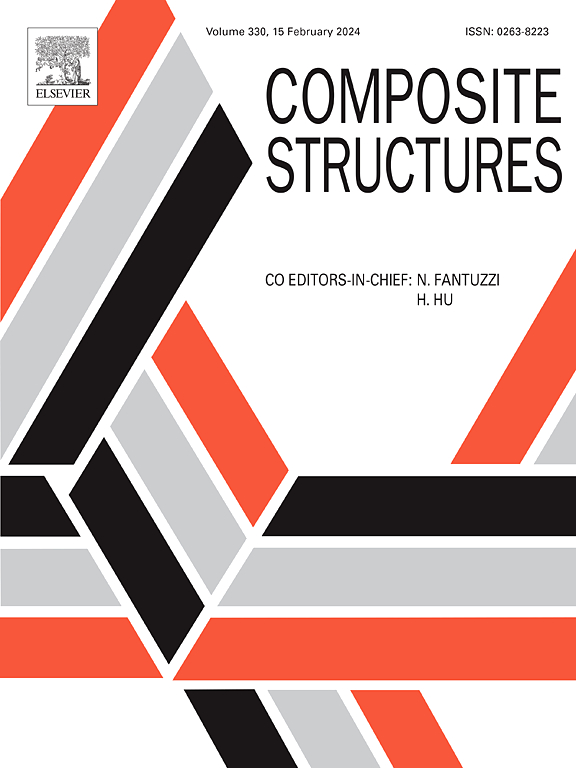Design and validation of quasi-zero stiffness metamaterial core in composite sandwich structures
IF 7.1
2区 材料科学
Q1 MATERIALS SCIENCE, COMPOSITES
引用次数: 0
Abstract
Rapid advancements in aerospace, high-speed rail, and precision instrumentation have driven the evolution of multifunctional structures. Quasi-zero stiffness sandwich structures integrate load-bearing capacity and vibration isolation by combining elastic supports with core materials that exhibit a nonlinear response under stress. This paper presents the design of a new quasi-zero stiffness composite sandwich panel, combining the lightweight and high-strength properties of carbon fiber laminates with the quasi-zero stiffness characteristics of the core structure. The design integrates lightweight, load-bearing, and vibration damping functions. The test specimens were fabricated using 3D printing and prepreg curing molding techniques. The quasi-zero stiffness behaviour of the structure was verified through simulation analyses and quasi-static compression tests. Additionally, dynamic tests were performed to assess the elastic wave transmission characteristics of the specimens under varying preload conditions (3.6 kg, 4.3 kg, 5.2 kg, and 6.5 kg). The results revealed that the sandwich structure exhibited optimal vibration damping performance under a preload of 5.2 kg, with an average acceleration transfer rate of –22 dB over the frequency range of 0 – 100 Hz, demonstrating excellent low-frequency vibration damping performance. Leveraging the superior mechanical properties of carbon fiber panels, this material is highly adaptable to a range of application scenarios and holds significant potential for engineering applications.
复合材料夹层结构准零刚度超材料芯的设计与验证
航空航天、高铁和精密仪器的快速发展推动了多功能结构的发展。准零刚度夹层结构通过将弹性支撑与在应力下表现出非线性响应的核心材料相结合,集成了承载能力和隔振能力。结合碳纤维层压板的轻量化、高强特性和核心结构的准零刚度特性,设计了一种新型准零刚度复合材料夹芯板。该设计集成了轻质、承重和减振功能。测试样品采用3D打印和预浸固化成型技术制造。通过仿真分析和准静态压缩试验,验证了结构的准零刚度特性。此外,还进行了动态试验,以评估不同预加载条件下(3.6 kg、4.3 kg、5.2 kg和6.5 kg)试件的弹性波传输特性。结果表明,在预载荷为5.2 kg时,夹层结构具有最佳的减振性能,在0 ~ 100 Hz频率范围内,平均加速度传递率为- 22 dB,具有良好的低频减振性能。利用碳纤维板优越的机械性能,这种材料具有很强的适应性,适用于各种应用场景,在工程应用中具有巨大的潜力。
本文章由计算机程序翻译,如有差异,请以英文原文为准。
求助全文
约1分钟内获得全文
求助全文
来源期刊

Composite Structures
工程技术-材料科学:复合
CiteScore
12.00
自引率
12.70%
发文量
1246
审稿时长
78 days
期刊介绍:
The past few decades have seen outstanding advances in the use of composite materials in structural applications. There can be little doubt that, within engineering circles, composites have revolutionised traditional design concepts and made possible an unparalleled range of new and exciting possibilities as viable materials for construction. Composite Structures, an International Journal, disseminates knowledge between users, manufacturers, designers and researchers involved in structures or structural components manufactured using composite materials.
The journal publishes papers which contribute to knowledge in the use of composite materials in engineering structures. Papers deal with design, research and development studies, experimental investigations, theoretical analysis and fabrication techniques relevant to the application of composites in load-bearing components for assemblies, ranging from individual components such as plates and shells to complete composite structures.
 求助内容:
求助内容: 应助结果提醒方式:
应助结果提醒方式:


